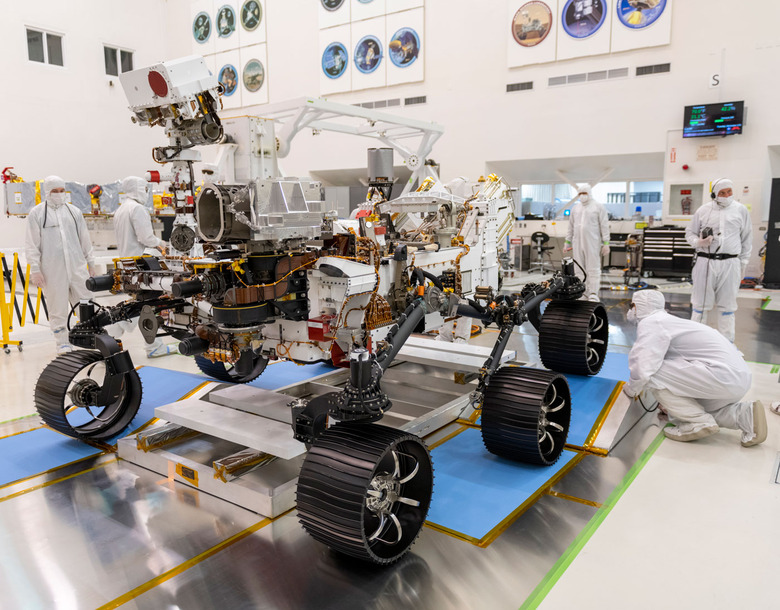Watch The Mars 2020 Rover Ace NASA's First Driving Tests
NASA's new Mars 2020 rover has trundled for the first time, with the autonomous space explorer destined for the Martian surface acing its driving test closer to home, in California. Having been under assembly for the past few months, the rover was ready to demonstrate that it could not only operate under its own weight, but do so with less involvement from NASA specialists back on Earth.
The current rovers on Mars, most recently Curiosity, relies for the most part on NASA's Jet Propulsion Laboratory (JPL) setting the path. For the Mars 2020 rover, the goal was to make the traveling science lab more self-sufficient.
That includes auto-navigation software which should be able to more rapidly respond to obstacles and other issues it encounters as it moves, together with higher resolution color navigation cameras. These have a wider field of view, too, and can feed information into an extra computer to generate maps. While teams back on Earth will still be setting the route, the new rover should be better able to complete it without needing to wait for assistance.

The goal is to average around 650 feet on Mars per day. While that may not seem like much, it in fact comes close to the current record for driving in a single day, achieved by the Opportunity rover, which was 702 feet.
In contrast, the testing at the JPL carried out this week involved a lot less distance. Over the course of ten hours, the Mars 2020 rover showed it could steer, turn, and drive in 3 foot increments. NASA had set up a series of small ramps, too, to show that the rover could handle inclines as well.
While it did so, one of the first instruments aboard the rover was active too. The Radar Imager for Mars' Subsurface Experiment (RIMFAX) will be used to analyze what's going on under the surface of the red planet, at depths potentially greater than 30 feet depending on material. It's mounted low, at the rear of the rover, and will help NASA scientists spot any evidence of ice or water.
While the test driving may be of relatively short periods, if the Mars 2020 rover can do that on Earth then the lowered gravity of Mars should be no problem. Indeed, NASA's JPL team is so confident of the results, the next time the rover moves under its own power should be when it's actually on Mars. If all goes to plan, the launch should take place in July or August of 2020, with a long journey leading up to a mid-February 2021 landing. Piggybacking on the rover will be a new helicopter designed to give a view of the red planet from above.
